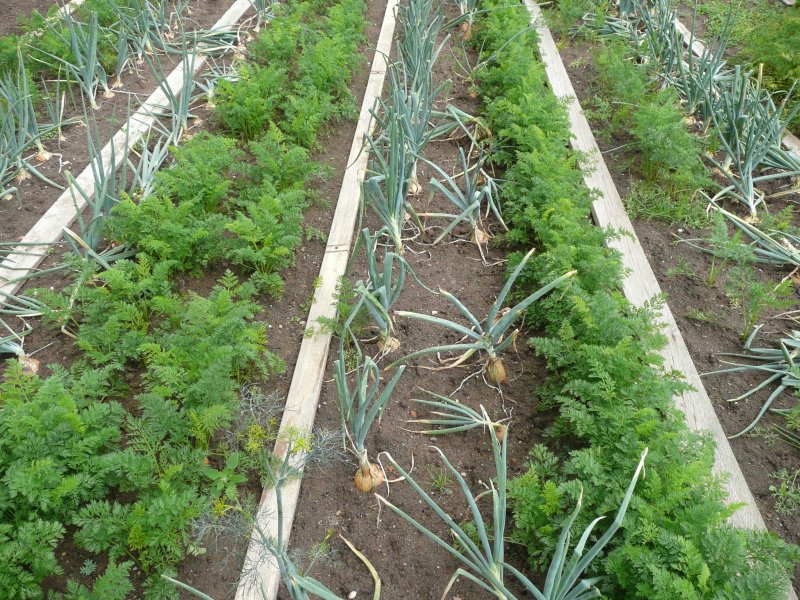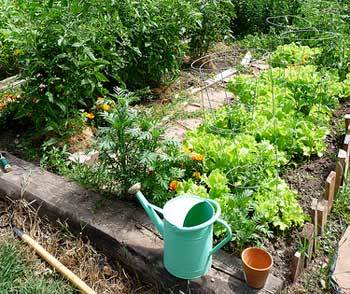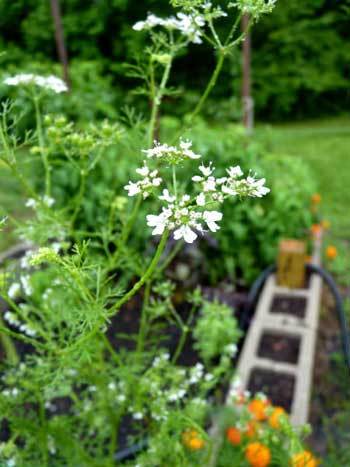The following HOMEGROWN 101 on companion planting, comes from Karin Bosela, a self-described tree-hugging dirt worshipper.
Companion planting is sort of like making table assignments for a dinner party: The whole idea is to put people—or, in this case, plants—next to each other that will get along. Do tomatoes like basil? Will arugula play nicely with broccoli? Your goal is to create a harmonious environment and avoid food fights. The key to companion planting is knowing which families your plants belong to. Essentially, you want to plant Hatfields next to Hatfield allies and not next to McCoys. Bonus: Good companion planting will not only help your garden thrive but will help repel pests, too.
I learned these things from my father, a contractor by trade but an amateur horticulturist and botanist who used to give lectures at a local college. He could read, write, and speak Latin and even has a few trees and shrubs named after him: a rhododendron, a layered maple. As a kid, I would watch him mix soil and natural pesticides while listening to him talk about companion planting. Back then, the turf-war analogy was rich for me. I especially liked thinking of the garden in terms of The Godfather. (Whadoya want from a teenager trying to learn all of the family secrets?)
Sadly, I lost my father to cancer, but I have a copy of his (green) thumbprint that I wear on a dog tag whenever I garden. This way, I always have him with me to help me tend my plants, a dear reminder that I owe most of my knowledge of plants, soil, and gardening to him. You could say we were companionably planted. To get started companion planting in your own garden, keep reading.

Companion planting of carrots and onions. Photo by manfred.sause@volloeko.de [CC BY-SA 3.0]
Know Your Families
There are essentially 13 vegetable families that the average gardener should know. A quick-and-dirty breakdown:
1. Amaryllidaceae Family, better known as the allium genus, derives from the Latin word meaning garlic and includes onionlike vegetables with grassy foliage, bulb roots, and strong flavors. Examples: garlic, onions, leeks, shallots, scallions, and chives. Members of this family appreciate sandy, loamy soils with plenty of organic matter, a neutral pH, good drainage, and full sun.
2. Brassicaceae Family is better known as mustards or cruciferous vegetables: cabbage, broccoli, cauliflower, Brussels sprouts, kohlrabi, turnips, radishes, cress, bok choy, arugula, nasturtiums or watercress, collards, kale, and mustard greens. Members of this family tend to favor cool weather, and many improve in flavor after a touch of frost.
3. Chenopodiaceae Family is also known as the goosefoot family because the leaves of the flowering plants bear a slight resemblance to a foot. Examples: beets, Swiss chard, lamb’s quarters, quinoa, and spinach. Like the mustard family, goosefoots tend to favor cool weather.

4. Compositae Family is part of the larger group of angiosperms, or flowering plants. These include endive, escarole, cardoon, artichoke, sunflower, lettuce, dandelion, and marigold. These crops favor cooler weather but can be grown in warmer climates with sufficient shade or either morning or late afternoon sun.
5. Cucurbitaceae Family, also known as the gourd family, includes gourds; cantaloupe; acorn, crookneck, and spaghetti squash; zucchini; cucumber; pumpkins; and watermelons. Members of this family are warm-climate annuals that benefit from sunny locations and fertile soil.
6. Gramineae Family is one of the largest families, consisting mostly of herbaceous, grasslike staple crops such as wheat, rice, maize or corn, barley, oats, and millet.
7. Leguminosae Family, also known as the pea family, includes shrubs, vines, and herbs bearing bean pods: peas, beans (runner, Lima, common, fava, mung, and adzuki), peanuts, chickpeas, lentils, and soybeans. This family likes sunny locations with well-drained soil at neutral pH levels.
8. Solanaceae Family contains plants in the genus Solanum. These vegetables are often referred to as nightshade vegetables because they developed a means of defending themselves against predators, such as insects, that wish to consume them. This family includes: tomatoes, potatoes, eggplant, tomatillos, tobacco, goji berries and peppers, and cayenne. Despite the nightshade moniker, these plants need full sun, in addition to well-drained soil packed with lots of organic matter.

9. Umbelliferae Family consists mostly of aromatic plants with hollow stems: celery, celeriac, dill, chervil, coriander, parsley, carrot, fennel, and parsnips. Because the edible part of many of these plants grows underground, a loose, deep, stone-free soil with constant moisture is best.
10. Convolvulaceae Family, commonly known as the morning glory family, makes showy garden plants. This family contains sweet potatoes and yams, as well as water spinach, AKA Chinese watercress. Yams and sweet potatoes appreciate warmer and tropical climates (or a greenhouse) and need full sun, although sweet potatoes can tolerate poor soil and are somewhat drought-tolerant.
11. Labiateae, or Lamiaceae, Family is a mostly herbaceous group of plants known for its aromatic qualities and uses as spices, essential oils, and medicinal remedies. These include: mint, basil, rosemary, sage, savory, marjoram, oregano, thyme, lavender, and chia.
12. Polygonaceae Family, also known as the buckwheat family, includes buckwheat grain, rhubarb, and sorrel.
13. Malvaceae Family, or the mallows, is a family of flowering plants that includes okra, cotton, and cacao.
Now that we have all of the families sorted out, we’re ready to cover what grows well together and what combos help repel pests. Two charts—the first on companion planting and the second on repelling pests—are included below, but you can also download them as print-friendly PDFs:
